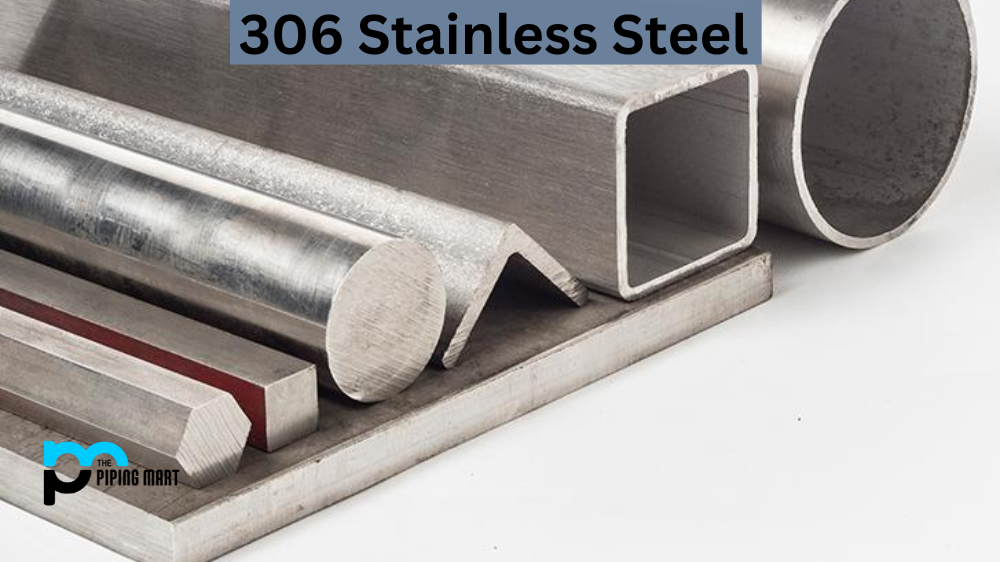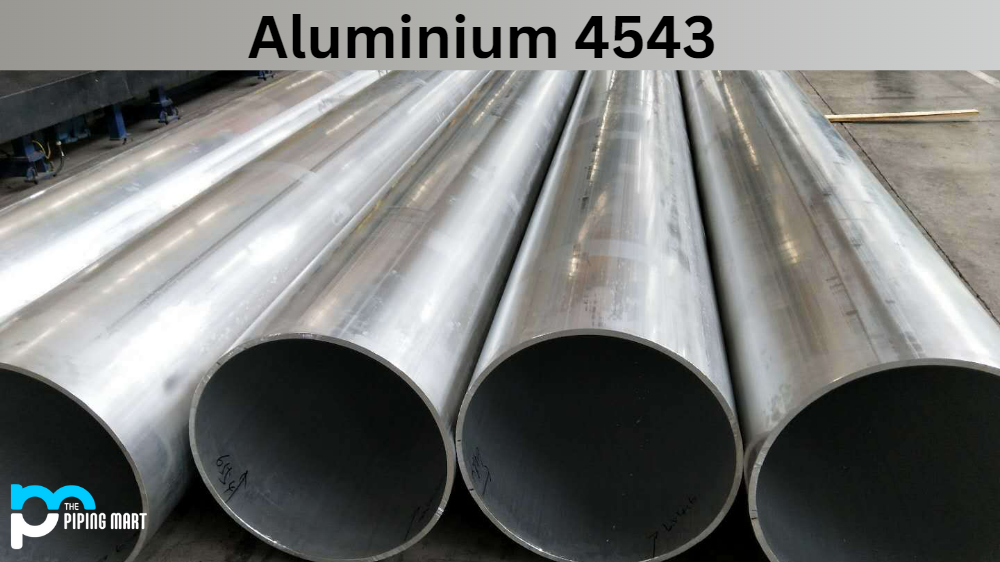306 stainless steel is a form of austenitic steel, which is a type of iron that includes chromium, nickel, and other elements. This combination gives 306 stainless steel its many unique properties, such as corrosion resistance, durability, ductility, and non-magnetic properties. It’s also highly malleable and can be quickly formed and cut. Let’s take a closer look at the properties and uses of 306 stainless steel.
What Forms is 306 Stainless Steel Available at Piping Mart?
- 306 Stainless Steel Bars
- 306 Stainless Steel Bolts
- 306 Stainless Steel Pipes
- 306 Stainless Steel Screw
- 306 Stainless Steel Tubing
- 306 Stainless Steel Valves
- 306 Stainless Steel Washers
- 306 Stainless Steel Flanges
- 306 Stainless Steel Fasteners
- 306 Stainless Steel Electrodes
- 306 Stainless Steel Stud Bolts
- 306 Stainless Steel Sheet Plates
- 306 Stainless Steel Pipe Fittings
306 Stainless Steel Composition
SS 306 composition is made up of iron, chromium, nickel, and carbon. This combination of elements helps the steel resist corrosion while still remaining soft and machinable. The addition of chromium to the alloy increases its resistance to oxidation and other forms of corrosion, as well as providing superior strength. Because of this versatility, UNS S30600 is used in a variety of applications – from automotive components to medical implants – due to its excellent properties and ability to stand up to harsh environmental conditions. It is also one of the most common alloys found in households, with numerous consumer products containing 306 stainless steel such as kitchen appliances and utensils. Thus, 306 stainless steel composition makes it an invaluable material for many industries worldwide!
306 Stainless Steel Physical Properties
306 stainless steel is an austenitic alloy that offers corrosion resistance, strength, and ease of scalability. It has a high chromium content, making it highly resistant to various oxidizing agents and pitting. This metal also has low thermal expansion and is non-magnetic, making it ideal for industrial applications where accuracy and precision are key considerations. In addition, 306 stainless steel can endure tremendous levels of stress without showing excessive wear or warping. Its excellent tensile strength and ductility make it extremely cost-effective in most industrial environments.
306 Stainless Steel Mechanical Properties
The UNS S30600 alloy is a relatively soft material with a yield strength of between 45 and 200 ksi, making it well-suited for use in different hardware components. It has excellent free-cutting properties, which allow it to be machined quickly and accurately, while its directional stability and corrosion resistance are other strengths of the material. These mechanical properties make it an ideal choice when working on applications like food prep or appliance parts that require high levels of strength and durability. This stainless steel is also highly resistant to stress cracking under elevated temperature, making it particularly appealing for engineering projects requiring precision and long-term performance.
306 Stainless Steel Specifications
ASTM A959 (2004)
A276
A312
A632
A176
A580
306 Stainless Steel Properties
One of the main reasons why engineers like to work with S30600 Material is because it offers excellent corrosion resistance. This makes it ideal for use in environments where exposure to chemicals or saltwater is common. It also has excellent weldability due to its low carbon content, so engineers can easily join pieces together using standard welding techniques. For these reasons, it’s commonly used in marine applications such as boat hulls or shipbuilding.
Another great thing about 306 stainless steel is its durability. This type of steel is stronger than conventional austenitic steels like 304L or 316L due to its higher nitrogen content. It also has better impact strength than other types of austenitic steels, making it ideal for applications where high-stress levels are expected. Lastly, it has good cryogenic toughness, which means that it can withstand extremely cold temperatures without cracking or becoming brittle. This makes it perfect for use in cryogenic vessels or piping systems that need to operate in sub-zero environments.
- The thermal properties of 306 stainless steel are its high melting point, which is 1425–1455 °C (2595–2650 °F), and its low thermal expansion coefficient, which is 9.6 x 10-6 /°C (5.4 x 10-6 /°F). The alloy has good resistance to oxidation at high temperatures and can be used in environments up to 1150°C (2100°F).
- The magnetic properties of 306 stainless steel are its ferromagnetic nature below 20 °C (68 °F) and its paramagnetic nature above 20 °C (68 °F). The alloy is not harden able to heat treatment and cannot be strengthened by cold working.
- Some common applications of 306 stainless steel include the following: aircraft structural parts, fasteners, furnace parts, chemical equipment, food processing equipment, kitchen utensils, and surgical instruments.
306 Stainless Steel Uses
Due to its unique combination of properties, there are many different uses for this type of stainless steel beyond just marine applications. For example, it’s commonly used in food processing equipment since its corrosion resistance helps protect against bacteria growth and contamination from food particles or oils. In addition, its non-magnetic properties make it perfect for use in electronic devices that require an electrically conductive material, such as circuit boards or connectors. Finally, because of its high strength and malleability characteristics, this type of steel is often used in medical equipment such as surgical instruments or implants where precision machining is required.
Conclusion:
Ultimately, there are countless uses for 306 stainless steel thanks to its unique combination of properties, including corrosion resistance, durability, ductility, non-magnetic qualities, and good cryogenic toughness. Its ease of fabrication makes this type of steel a favorite among engineers who need reliable materials that fit their specific requirements—from food processing equipment to medical implants—making it one of the most versatile forms of austenitic steel available today.

Abhishek is a seasoned blogger and industry expert, sharing his insights and knowledge on various topics. With his research, Abhishek offers valuable insights and tips for professionals and enthusiasts. Follow him for expert advice on the latest trends and developments in the metal industry.




